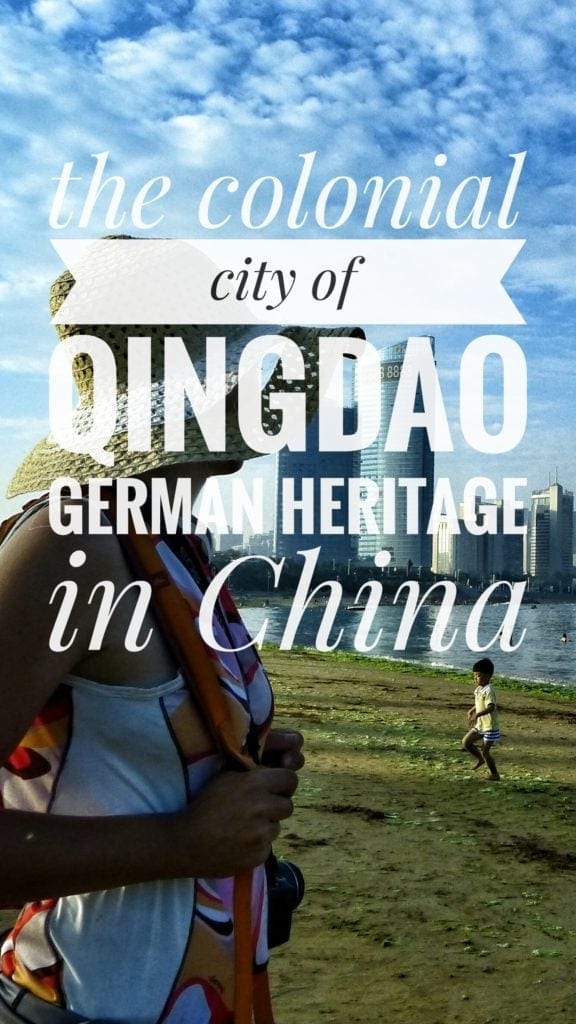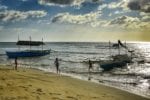Last Updated on 28 January 2025 by Cycloscope
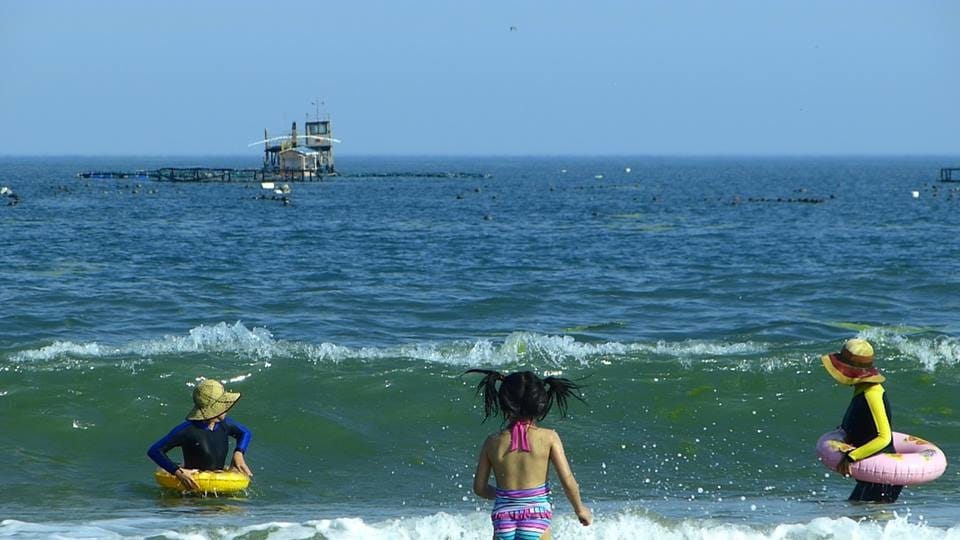
Traveling Qingdao, German heritage leftovers in China
Qingdao, Shandong, is a former German concession city in Eastern China. It is also one of the most renowned coastal cities in the country, where people enjoy spending their vacation time.
Some villas and streets along the shore are still dotted with beautiful German-style villas. But that’s not the only legacy the Germans left behind; Qingdao is also the hometown of China’s most famous beer, Tsingtao.
After being released from our police arrest in Xining, we are running out of visa time, and money also. So we take a long-distance train from Xining to Qingdao, from where we’ll hop on a ferry to South Korea.
34 hours hard sit journey, Xining to Qingdao by train
The train leaves on time, at 11 p.m. Nobody is in the seat next to us, so we try to sleep huddled together as long as possible before the train gets crowded. By 6 a.m., we had to take our seats; the train was packed now, but we were lucky enough to have had some space.
The journey is long and tiring. We eat noodles, look out the window, read a little, and observe the absurd items the train crew is trying to sell passengers.
At one point, a monk enters with a giant backpack, sits down, and begins making bracelets with rubber threads. Do you remember those? They were fashionable a decade ago.
The Chinese ladies on the train rave about it, seeing it as a wonderful thing. They surround the monk, who seems happy and quite talkative, as he talks non-stop for an hour.
Find our bicycles
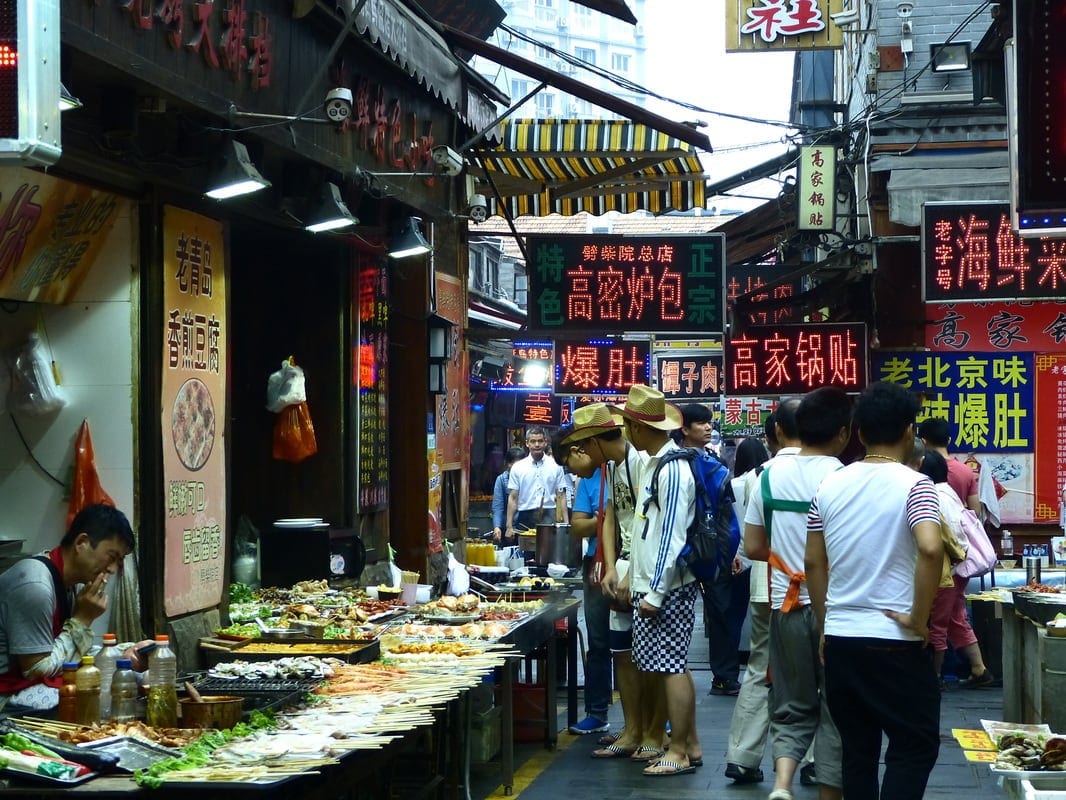
At 5 a.m., we finally arrive in Qingdao and go looking for the bikes we shipped a day before our departure. However, we are told that the office opens at 10 a.m., even though all the employees are already there! So, five more hours of waiting—it’s not too bad after a 34-hour train ride.
At 9:30, they let us in. We show them the receipt for collection, but they tell us our bikes haven’t arrived yet and haven’t even left Xining!
Not convinced, we struggle with communication, and after about an hour, they realize the bikes are in the city but at a different store. We don’t understand why, but asking questions seems unnecessary.
A guy with a van takes us to retrieve our beloved bikes at a warehouse far from the station, in the industrial port.
After collecting all five bikes, we head to the house of Jana, a Serbian girl who teaches English at a private school in town. She’s at work but left the keys under the doormat, which is fortunate since we really needed a shower and some sleep!
Finding the house isn’t easy, though—all the huge apartment blocks look the same. It takes us another couple of hours, and we’re exhausted.
Visiting Qingdao
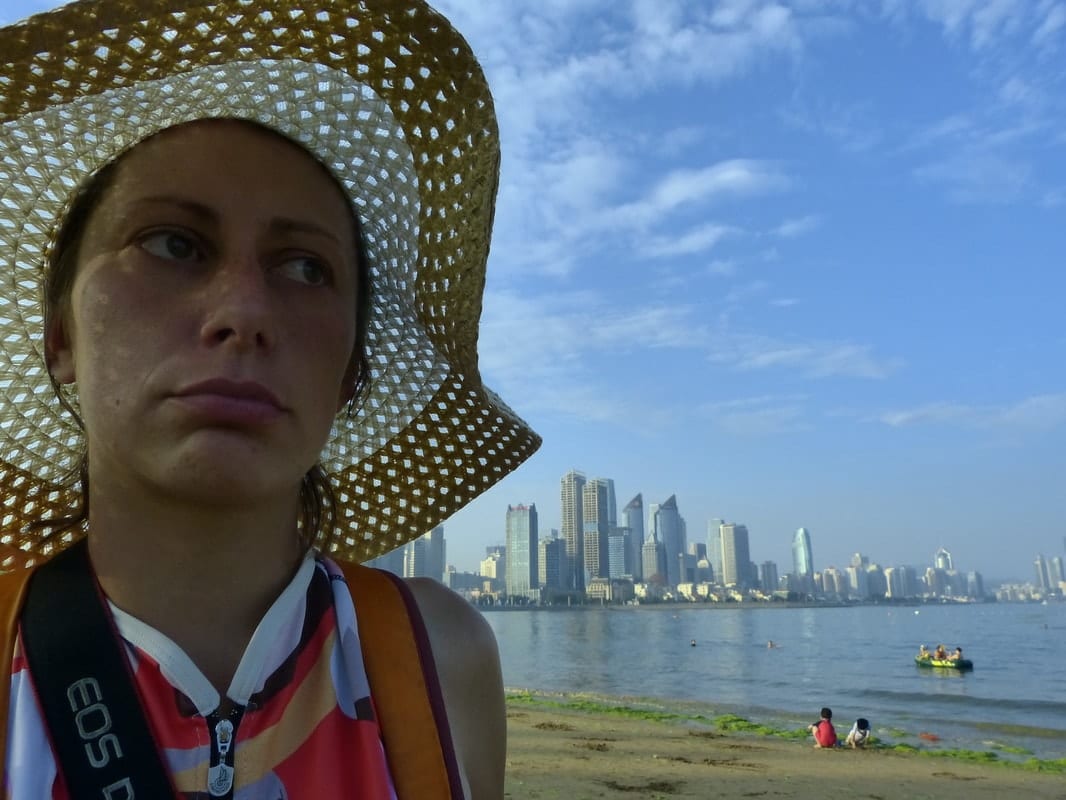
The next day we go to the port, we book the ferry for July 10th, and we’ll go to Incheon, South Korea, for 17 hours, 900 yuan each. We spent these five days walking around the city, talking a lot with Jana, and finally cooking something more elaborate than instant noodles.
From Jana’s window, on the twentieth floor, the fog of pollution is incredibly thick. One morning, we can’t even see the building across the street, and we don’t feel too well. It’s an overwhelming feeling.
There’s an app for phones that reports the city’s daily pollution levels, similar to a weather forecast. The figures are terrible, but they are likely even worse since the app is government-controlled. But if everyone wants cheap goods, someone has to produce them somewhere.
The next day, the sky is slightly better—still not blue for more than half an hour, but you can tell where the horizon begins.
The city’s waterfront is cute and nice. It must have been a beautiful place once. From 1897 to 1919, it was a colony of the German Empire, and there were several European-style buildings and churches. It’s a strange contrast with all the people riding futuristic-looking hoverboards.
Then there’s the famous beer—Tsingtao (pronounced Qingdao), the most consumed beer in China and in Chinese restaurants around the world.
We also visit the narrow streets of the city center market, where, for the first time, we see insects sold as food. Although the stand looks more like a tourist attraction, the local Chinese are just as horrified as we are.
Around Qingdao
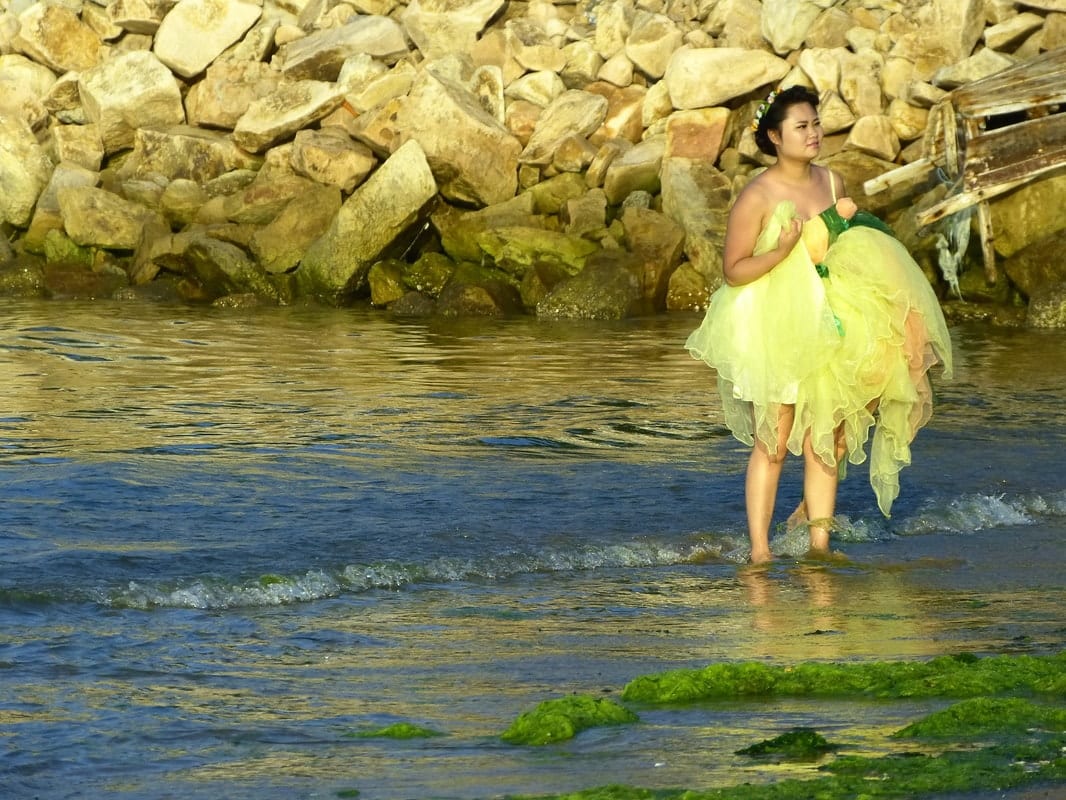
Pea-green algae cover the sea. Some say they may not be natural seaweed. Jana mentions that it’s not so bad this time; it could be much worse. The fact remains, they’re creepy, and I won’t swim. Daniele does, though, and survives—apparently without any visible genetic mutation.
We also went on a nice bike ride along the coast, about twenty kilometers, finally escaping the city. Once we reached the beach, we saw that everyone was bathing fully dressed, with huge life preservers, and the beach was full of couples posing for pictures.
Behind the beach, there’s an incredible spot for souvenir photos: a fake church, a fake Dutch windmill, a fake gondola, fake animals in a fake zoo, and even a mock boat.
So, you can have a fake wedding album to show to your (fake?) grandchildren! Fantastic! After these five days in this relaxing city, we head to take our ferry to Korea, although we would have still preferred being in the mountains of Qinghai with nomads, shepherds, and yaks.
Read it later! Save it on Pinterest
